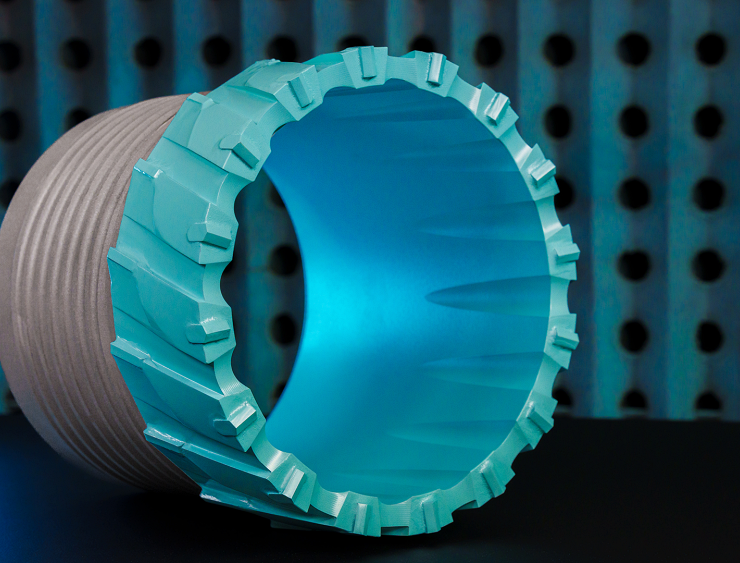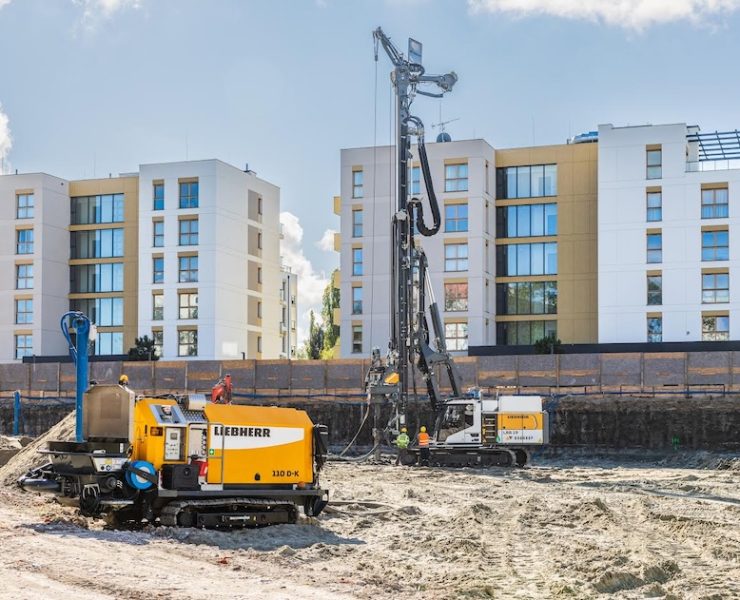Drilled Shafts: Concrete Placement and Design
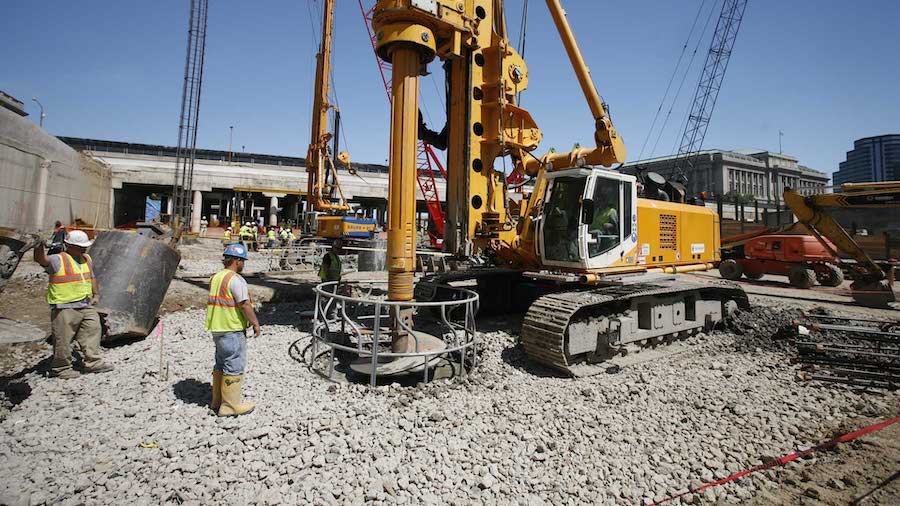

Building the foundation for a drilled shaft is similar to the process of fabricating a reinforced concrete structure. But, often this construction is completed under extremely challenging situations because of the depth below ground surface as well as the placement underwater.
Because of the challenging factors to be considered, thorough design and planning need to occur before construction begins. This article will give an overview of the factors that should be analyzed for the construction of drilled shafts.
Concrete Characteristics for Drilled Shafts
Since drilled shafts are unique compared with other reinforced concrete structures, it is important to be sure that the right concrete is used. A common situation is to have the mix transported long distances to the work site, sometimes requiring the concrete to stay fluid four to eight hours before it is placed. Only certain types of concrete can withstand these conditions.
- Filling Ability: The mix must flow easily through the tremie, so it is often best to use concrete that is highly fluid along with using the right reinforcement cage.
- Passing Ability: Can the concrete pass through the reinforcement without blocking the way? It needs to have the ability to pass through small openings to reach all areas of the drilled shaft.
- Stiffness and Strength: Look at the structural performance requirements to be sure that the concrete meets the stiffness and strength guidelines.
- Heat of Hydration: If the drilled shaft has a large diameter, then it is important to prevent high levels of heat of hydration. The temperature of the mix matters, especially in hot environments.
- Durability: Low permeability is necessary to decrease the possibility of corrosion on the reinforcement. To resist the negative impact of the environment, the concrete should have a combination of low permeability and high density.
- Controlled Setting: The concrete for the drilled shaft needs to maintain workability long enough to allow the time necessary to complete the placement operations.
- Leaching, Bleeding, and Segregation Resistance: If the concrete is placed under water, it is impossible to avoid the contact between the fluid and the concrete. Choose a mix with a cohesive nature so that it resists mixture with external fluid.
- Self-Weight Compaction: It isn’t possible to use vibration in the borehole for deep drilled shafts. So, the concrete needs to consolidate and fill under self-weight.
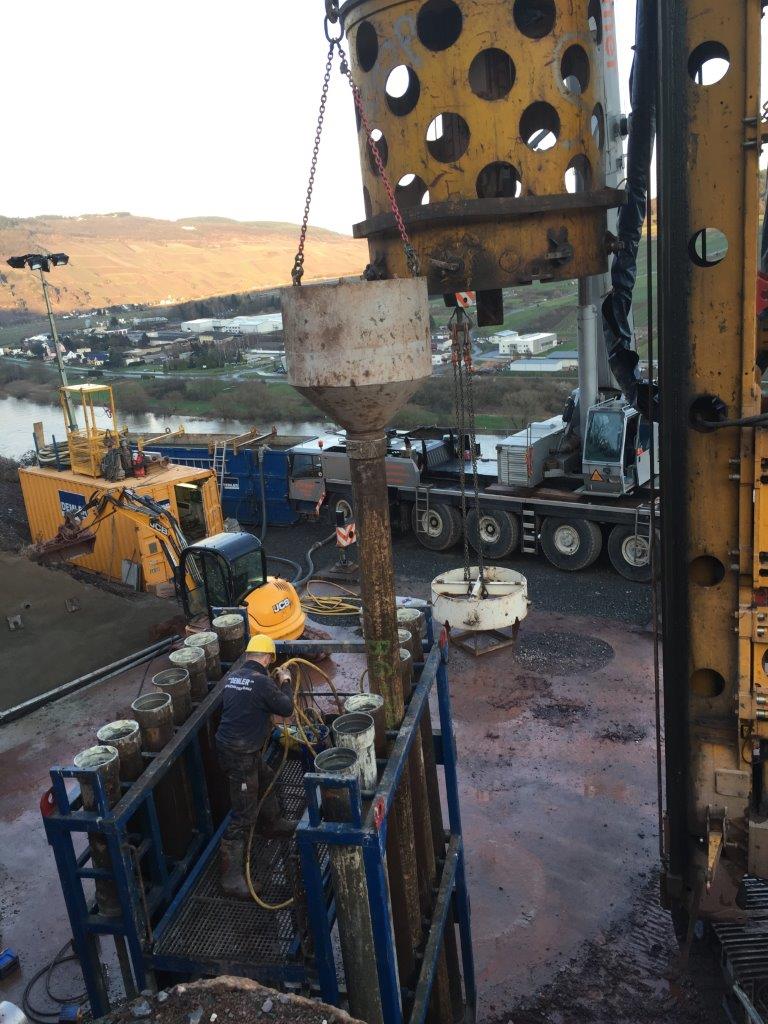
Concrete Placement
With drilled shaft excavation, the concrete placement needs to meet specific requirements based on the conditions of the project. These are some of the procedures that might be used:
- Dry Excavations: The simplest method for concrete placement is in a dry shaft excavation. Most of the time, the free fall method can be used. It is important to ensure that the concrete is directed down the center of the shaft to avoid contact with the sides of the hole or the reinforcement cage. Often, laborers working with shovels can’t direct the stream of concrete in an adequate way. So, a drop chute might be used.
It is possible to use temporary casings to seal a shaft so that it is dry, causing the fluid to accumulate outside the casing. If this method is used, then the concrete pressure needs to exceed the pressure of the fluid outside the casing when the casing seal is broken.
- Wet Excavations: Different methods need to be used for wet excavation, utilizing underwater techniques with a pumpline or a tremie. The concrete needs to have good workability for the entire duration of the placement. The gravity tremie is the most common method for relatively deep shafts (more than 60 feet).
A gravity-fed tremie is usually constructed with a steel tube and a hopper at the top. This tube is fed by discharging a bucket or using a pump directly from the concrete truck. The diameter of the tremie depends on the depth and diameter of the drilled shaft, although eight to 12 inches are the most common sizes.
The closed tremie must be watertight to prevent water from mixing with the concrete on the way down. The tremie is positioned to sit on the bottom of the shaft. Then, it is filled with the concrete mixture. Next, the tremie is lifted up, which breaks the closure plate at the end and causes the concrete to surge because of the weight. For this process to happen correctly, the weight of the concrete must be larger than the fluid pressure at the bottom of the tremie.
- Pump Placement: Often, a concrete pump delivers the concrete from the discharge (such as the ready-mix trucks) to the tremie. This method might be used instead of a gravity tremie for underwater placement. The principles are the same, but the delivery system is a little different.
Other Considerations for Drilled Shaft Concrete Placement
These are a few other considerations for concrete placement in a drilled shaft:
- Bottom Cleanliness and Slurry Properties: Even if you are using a high-quality tremie system, there are still possibilities of concrete defects if the slurry has a lot of sand or the hole isn’t clean. Before the concrete is discharged from the tremie, the base of the shaft needs to be cleaned of loose debris. This debris can get stirred up from the initial charge of the concrete and cause the debris to move up the rising column of concrete. The loose sediment at the bottom of the drilled shaft should be less than three inches.
- Record Maintenance: As the concrete is placed, details records need to be kept to measure the volume of the concrete in comparison with the shaft elevation. These measurements help to identify potential places where the concrete is filling in cavities and voids, revealing unusual conditions.
- Completion: Often, there are several feet of concrete that have been contaminated and needs to be removed. The top of the concrete can be shoveled off until the clean concrete is revealed.
- Base Grouting: To compensate for loose material and enhance the end bearing, post grouting can be done. This practice is relatively uncommon in North America, but it is occasionally needed.
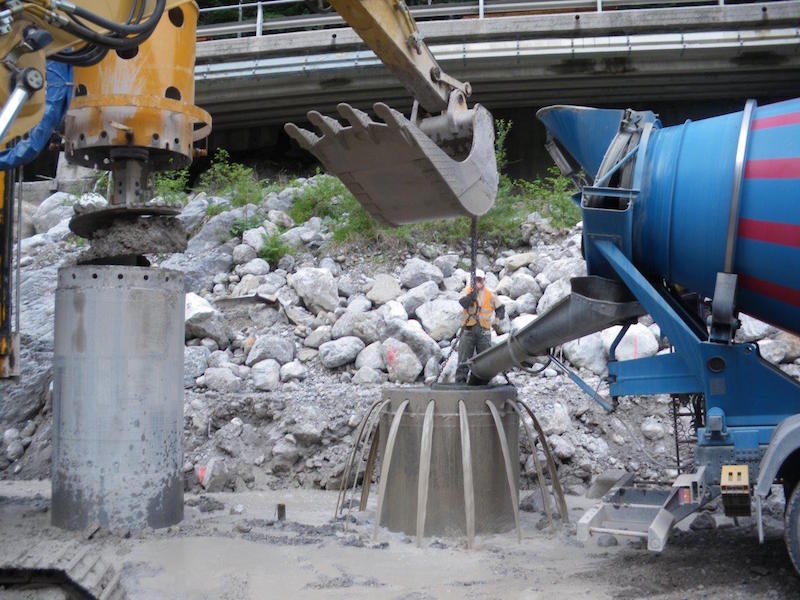
Concrete Mix
To meet the structural requirements, the concrete mix needs to achieve specific properties. Certain types of materials might be used, such as:
- Portland Cement, Type I/II
- Supplementary Cementing Materials (SCMs), such as silica fume, slag cement or fly ash
- Chemical Admixtures, such as air-entraining admixtures, set-controlling admixtures, accelerating admixtures, or water reducing admixtures
Testing for Workability and Durability
There are many variables that need to be considered for concrete placement and design within drilled shafts. Different methods can be used to measure the workability of the concrete, such as the slump test. This workability is often achieved by using natural sand and rounded natural aggregate. But, sometimes crush stone is used instead.
Tests can be used to show an indication of the concrete performance. Trial batches can be used to analyze the total air content, fresh concrete temperature, and the slump of the mixture. Most of the time, these tests are done at the ready-mix plant. For larger projects, it might be justified to have a batch plant at the job site where the testing can be done.
Many recent developments have created different types of tools and materials that can be used. It is essential to evaluate the temperature and mixture proportions for each project. Additionally, good communication is beneficial to meet the specific requirements that are needed.
Remember, each project is different, so it might be necessary to change the method of concrete placement or the types of materials that are used depending on the project.
What are drilled shafts?
Drilled shafts, or drilled piers, are used in deep foundation projects to support structures with large axial and lateral loads by excavating cylindrical shafts into the ground and filling them with concrete.
Which characteristics concrete should have for Drilled Shafts?
Since drilled shafts are unique compared with other reinforced concrete structures, it is important to be sure that the right concrete is used. The concrete should have characteristics such as - Filling Ability - Passing Ability - Stiffness and Strength - Heat of Hydration and Durability.














